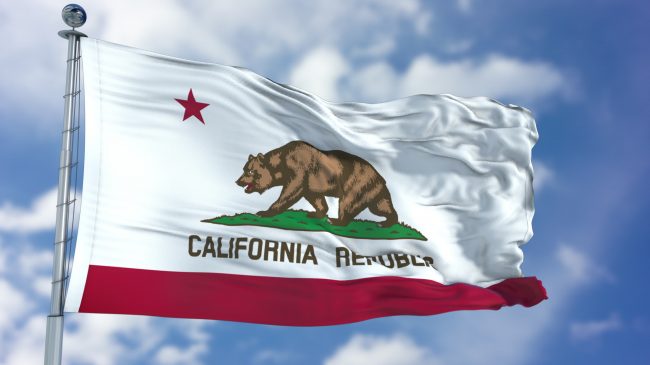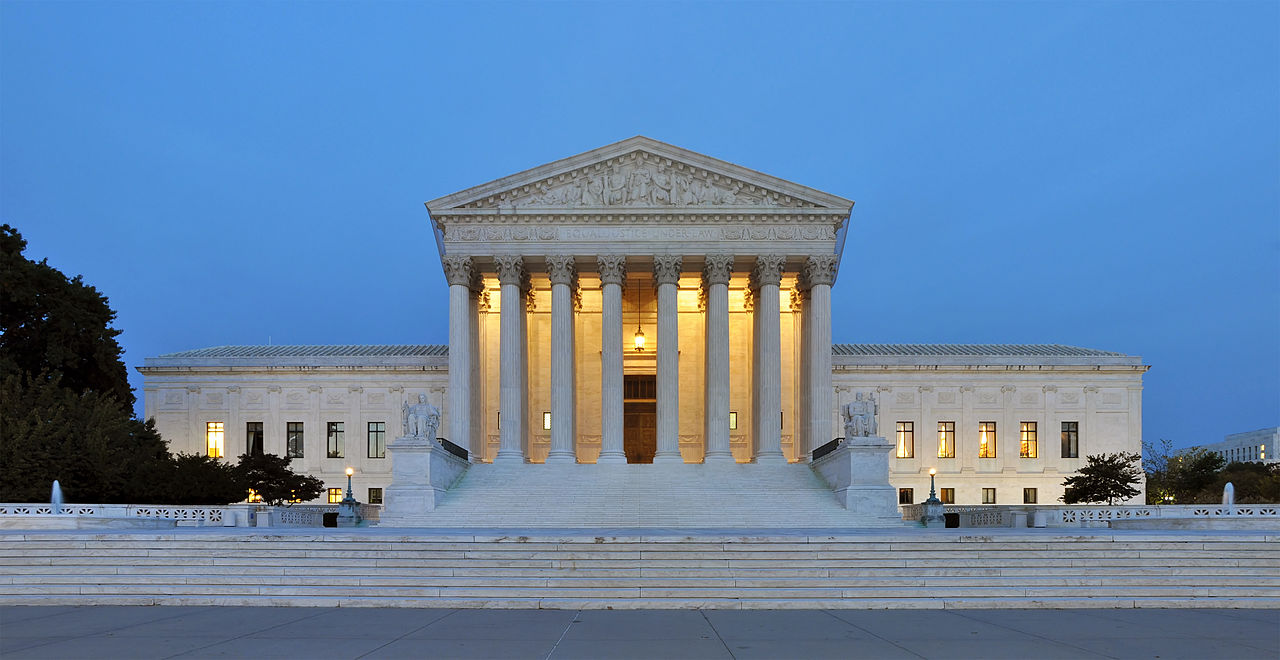
California Bear Flag. (Photo: ca.gov)
Separating Good Bailouts from Bad Bailouts
Only a light breeze was necessary to disrupt California’s state and local governments finances
By Edward Ring, May 13, 2020 2:07 am
If a Republican controlled U.S. Senate and a Republican occupying the White House cannot use this opportunity to demand reforms from financially mismanaged states controlled by Democrats, then they never will.
The pandemic shutdown is about to enter its third month, and economic repercussions have just begun. Too much has been shut down for too long. In California, the initial reopen is not going to include huge business sectors – theaters, concerts, conventions, sports, travel, hotels – and other sectors such as restaurants and retail establishments are going to be at half-capacity. Business revenue and profits have crashed, with proportional hits to tax receipts. The cascading economic damage is likely to far outlast the spread of the virus.
The federal response so far has been the COVID-19 CARES Act Relief Bill, which allocates $1.8 trillion in emergency spending to stimulate the shut down economy. This dwarfs the $831 billion stimulus package passed in 2009, and is equal to more than half of 2019 federal revenue which was $3.5 trillion. In terms of spending, it represents a 40 percent increase to the 2019 federal spending of $4.4 trillion. Using these numbers, a reasonable estimate of the federal deficit in 2020 would be $2.7 trillion, before any additional relief bills are passed, which is likely.
California’s economy, huge and diverse, may confound its critics and weather the coming deep recession better than other states. The tech sector benefits by providing enabling technologies for distance learning and telecommuting, and it will also benefit from likely new infusions of cash into defense R&D as tensions with China deepen. California’s agricultural sector may slow down but it won’t crash, because people have to eat. And while California’s real estate industry has been in a bubble for years, the state’s irresistible weather and scenery guarantee it will remain a favored destination, as will its population emerging from the pandemic relatively healthy compared to other major states.
California’s state and local governments, however, face unprecedented financial hardship. Only a light breeze was necessary to disrupt their finances, and what’s happening today is a hurricane. And even after the economic weather stabilizes, the state government’s financial house of cards will remain scattered.
Governments in states like California are controlled by public employee unions, who collect and spend over $800 million per year in member dues, and use that financial power to campaign and lobby for politicians who will do their bidding.
Only two months ago, Governor Newsom proudly released his 2020-21 budget, calling for record spending of $222 billion and projecting a $5.6 billion surplus. That was then. On May 7, the California state Department of Finance projected that between now and the end of the 2020-21 fiscal year, i.e., over the period ending just over one year from now, instead of a $5.6 billion surplus, they expect a $54 billion deficit. What about a federal bailout?
Governor Newsom has joined other governors, mostly from states controlled by Democrats, in criticizing Senate Majority Leader Mitch McConnell, who stated “states dealing with budget issues resulting from the coronavirus pandemic should seek bankruptcy protections instead of receiving federal aid.” It’s going to be a tough negotiation.
If a Republican controlled U.S. Senate and a Republican occupying the White House cannot use this opportunity to demand reforms from financially mismanaged states controlled by Democrats, then they never will. The financial challenges facing California’s state government began well before the pandemic. And they weren’t limited to California’s state government, almost without exception, they also afflicted California’s local governments and agencies.
A revealing article published by CalMatters last month explains in lurid detail what’s coming next for California’s cities. From north to south, it’s a dismal portrait.
San Francisco’s controller “recently estimated the pandemic will push the city between $1.1 and $1.7 billion into the red over the next two years — wiping out the city’s $800 million in reserves.” The pandemic is expected have at least a $100 million impact on San Jose’s budget. Los Angeles expects tax revenues to drop by $600 million; San Diego, $250 million. It’s the same story everywhere, from Eureka to El Centro.
California’s Three Financial Policy Failures
When it comes to civic finance in California, however, it is the long history leading into this immediate crisis that should be the real story. For the last several decades, policy decisions made by California’s elected democrats have had a cumulative impact and delivered accumulating consequences in three broad areas:
First, they have over-regulated literally everything, from retail and restaurant operations to manufacturing and resource industries, to home construction, and this has driven up the cost-of-living. A high cost-of-living has driven out the middle class and much of the tax base, exiled to friendlier states in America. It has also affected the second big category of policy mistakes, which is out-of-control public sector compensation.
Instead of paying attention to the impact their policies were having on California’s cost-of-living, and doing something about that, California’s elected officials instead compensated their public employees with wage and benefit packages that were far in excess of private sector norms. This helped mitigate public employees from the consequences of the policies that were making California unlivable for the citizens they served.
First, send money to individual households. Next, send money to small businesses. After that, and with extreme caution, send money to large businesses. And finally, with strings attached, send money to state governments. And make those strings tight indeed.
It’s important to view California’s third big policy blunder in the context of the first two. If California were an inviting place to retire on a limited fixed income, higher pension benefits would not have been such a priority for government union negotiators. And if the high cost-of-living hadn’t fueled demands for higher wages, governments wouldn’t have had to trade higher pension benefits in exchange for less expenditures in the present for higher wages. As it is, pensions were eating California’s government budgets. Before the pandemic struck.
Good Bailouts vs Bad Bailouts
Writing for Forbes last month, author Kathryn Judge expressed a common and valid warning usually heard from libertarians and conservatives, that there is a “moral hazard” in government bailouts of huge corporations that get into financial trouble. She correctly cites the corporate borrowing binge of the past decade, the useless channeling of that debt into stock buybacks, and makes the logical conclusion that these corporations did this because they knew that if they ever needed to, they’d get another bailout.
This is true enough, but there is a hierarchy of moral hazards, and the highest one, topping even corporate bailouts, is government bailouts. Corporations that cannot compete in a market economy, even those that get bailouts, eventually get their comeuppance. Governments, on the other hand, especially state and local governments, are not held accountable by the market, they are monopolies. And in California, they are barely accountable to voters.
Governments in states like California are controlled by public employee unions, who collect and spend over $800 million per year in member dues, and use that financial power to campaign and lobby for politicians who will do their bidding.
In these times, no serious observer is denying that federal stimulus money is necessary. But a good bailout might look like this: First, send money to individual households. Next, send money to small businesses. After that, and with extreme caution, send money to large businesses. And finally, with strings attached, send money to state governments. And make those strings tight indeed.
For example, before any federal money gets into Gavin Newsom’s hands, demand he convene the state legislature, and pass a pension reform act that adjusts all pension benefits to PEPRA‘s terms (the Public Employees’ Pension Reform Act of 2013) for ALL state and local employees regardless of hire date, effective retroactively to January 1, 2020. Heck, maybe he can even do this via an emergency executive order. Do that one, simple thing, something everyone can understand, and something that would save hundreds of billions over the next few decades.
There’s much more that could be done. Moving back through the three policy blunders – lower public employee wages, along with lowering their pensions. Lower the cost-of-living through deregulation, so not only public employees can cope today, and thrive tomorrow, but everybody living in this still wonderful state.
- Ringside: The Potential of Waste-to-Energy in California - April 17, 2024
- Ringside: How Much Water Will $30 Billion Buy? - April 10, 2024
- Ringside: Sacramento’s War on Water and Energy - April 4, 2024




